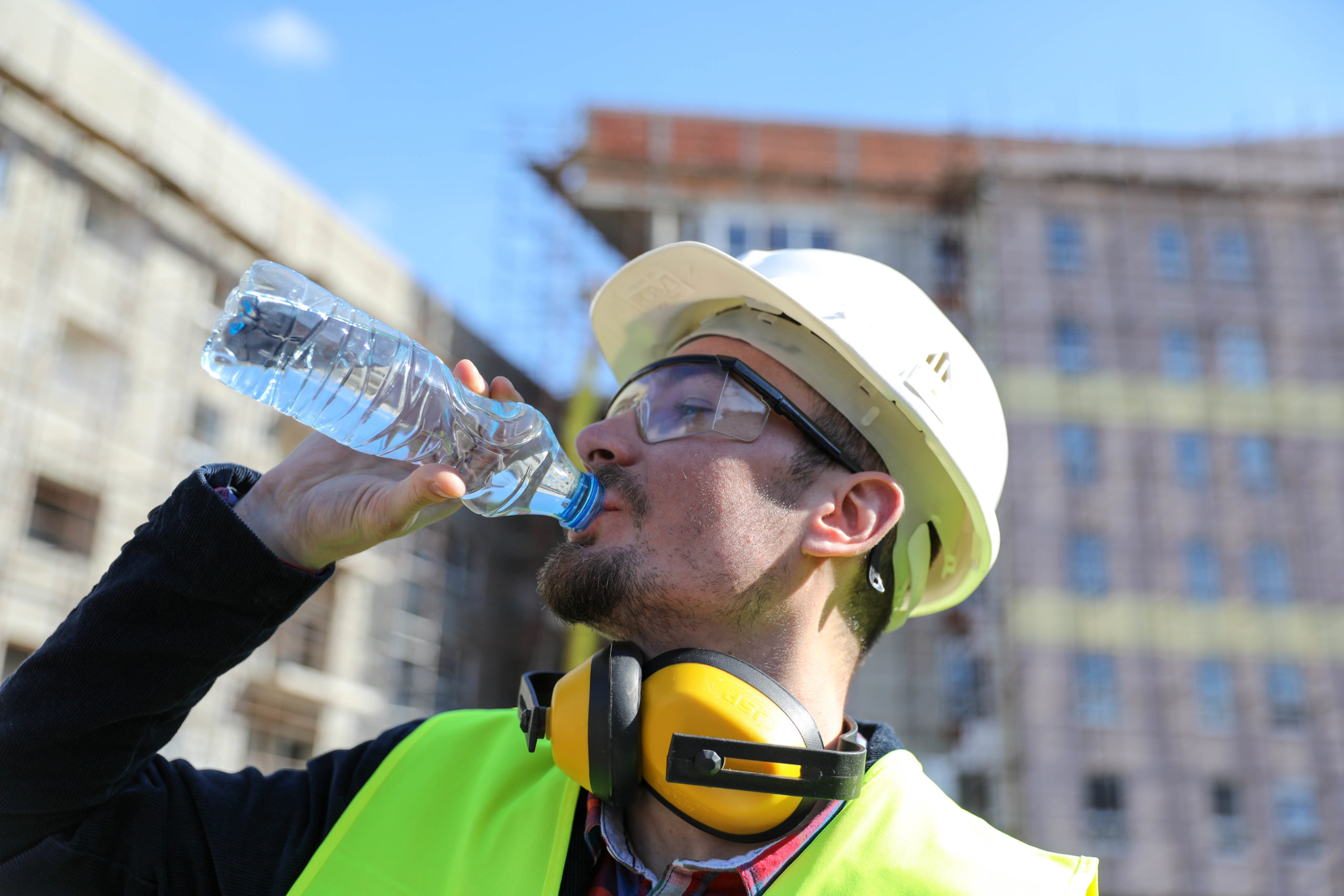
Skilled Trades Summer Safety: Dehydration
Dehydration is a significant risk for the Skilled Trades, working in the summer heat. When the body loses more fluids than it takes in, it can lead to serious health issues, including heat exhaustion and heat stroke. Preventing dehydration is crucial for maintaining health and performance. This article provides practical tips on how to prevent dehydration in the heat, ensuring you stay safe and hydrated.
Understanding Dehydration
Dehydration occurs when your body loses more fluids than it consumes. This can happen due to sweating, urination, and even breathing. In hot weather, the risk of dehydration increases because the body sweats more to cool itself down. Symptoms of dehydration include:
- Thirst
- Dry mouth and tongue
- Dark yellow urine
- Dizziness or lightheadedness
- Fatigue
- Headache
- Muscle cramps
Severe dehydration can lead to more serious health problems, such as heat exhaustion or heat stroke, which require immediate medical attention.
Key Tips to Prevent Dehydration
Drink Plenty of Water
The most effective way to prevent dehydration is to drink plenty of water. In hot weather, it’s recommended to drink at least 8 ounces of water every 20 minutes. Don’t wait until you’re thirsty to drink; by the time you feel thirsty, you may already be dehydrated.
Avoid Caffeinated and Sugary Drinks
Caffeinated and sugary drinks can actually contribute to dehydration. Beverages like coffee, tea, soda, and energy drinks have diuretic effects, increasing fluid loss through urination. Instead, opt for water, sports drinks, or electrolyte solutions to stay hydrated.
Eat Hydrating Foods
Certain foods can help keep you hydrated. Fruits and vegetables with high water content, such as watermelon, cucumbers, oranges, and strawberries, are excellent choices. These foods not only provide hydration but also essential vitamins and minerals.
Use Fans and Shade
Creating a cooler environment can significantly reduce the risk of dehydration. Use fans to increase airflow and set up shaded areas where you can take breaks. If possible, work or exercise during cooler parts of the day, such as early morning or late afternoon.
Monitor Your Urine
One of the simplest ways to check your hydration level is to monitor the color of your urine. Light yellow or clear urine indicates proper hydration, while dark yellow or amber urine suggests dehydration. Aim to keep your urine light-colored by drinking enough fluids throughout the day.
Acclimate to the Heat
Gradually acclimating to hot weather can help your body adjust and improve its ability to cool itself. Start with shorter periods of exposure to heat and gradually increase the duration over several days. This process helps your body become more efficient at sweating and retaining fluids.
Use Electrolyte Solutions
Electrolytes are minerals that help maintain the body’s fluid balance. When you sweat, you lose electrolytes like sodium, potassium, and magnesium. Drinking electrolyte solutions or sports drinks can help replenish these essential minerals, especially during prolonged periods of heat exposure.
Educate Yourself and Others
Knowledge is power when it comes to preventing dehydration. Educate yourself and others about the signs of dehydration and the importance of staying hydrated. Encourage open communication and a buddy system where individuals look out for each other, ensuring everyone stays safe and hydrated.
Conclusion
Preventing dehydration in the heat is essential for maintaining health and well-being. By drinking plenty of water, eating hydrating foods, taking regular breaks, and wearing appropriate clothing, you can significantly reduce the risk of dehydration. Remember to monitor your hydration levels and educate others about the importance of staying hydrated.



